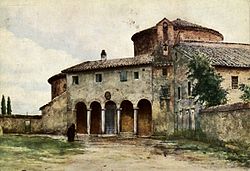This article needs additional citations for verification .(November 2024) |
| Years |
|---|
| Millennium |
| 1st millennium |
| Centuries |
| Decades |
| Years |
| 470 by topic |
|---|
| Leaders |
| Categories |
| Gregorian calendar | 470 CDLXX |
| Ab urbe condita | 1223 |
| Assyrian calendar | 5220 |
| Balinese saka calendar | 391–392 |
| Bengali calendar | −124 – −123 |
| Berber calendar | 1420 |
| Buddhist calendar | 1014 |
| Burmese calendar | −168 |
| Byzantine calendar | 5978–5979 |
| Chinese calendar | 己酉年 (Earth Rooster) 3167 or 2960 — to — 庚戌年 (Metal Dog) 3168 or 2961 |
| Coptic calendar | 186–187 |
| Discordian calendar | 1636 |
| Ethiopian calendar | 462–463 |
| Hebrew calendar | 4230–4231 |
| Hindu calendars | |
| - Vikram Samvat | 526–527 |
| - Shaka Samvat | 391–392 |
| - Kali Yuga | 3570–3571 |
| Holocene calendar | 10470 |
| Iranian calendar | 152 BP – 151 BP |
| Islamic calendar | 157 BH – 156 BH |
| Javanese calendar | 355–356 |
| Julian calendar | 470 CDLXX |
| Korean calendar | 2803 |
| Minguo calendar | 1442 before ROC 民前1442年 |
| Nanakshahi calendar | −998 |
| Seleucid era | 781/782 AG |
| Thai solar calendar | 1012–1013 |
| Tibetan calendar | ས་མོ་བྱ་ལོ་ (female Earth-Bird) 596 or 215 or −557 — to — ལྕགས་ཕོ་ཁྱི་ལོ་ (male Iron-Dog) 597 or 216 or −556 |

Year 470 ( CDLXX ) was a common year starting on Thursday of the Julian calendar. At the time, it was known as the Year of the Consulship of Severus and Iordanes (or, less frequently, year 1223 Ab urbe condita ). The denomination 470 for this year has been used since the early medieval period, when the Anno Domini calendar era became the prevalent method in Europe for naming years.